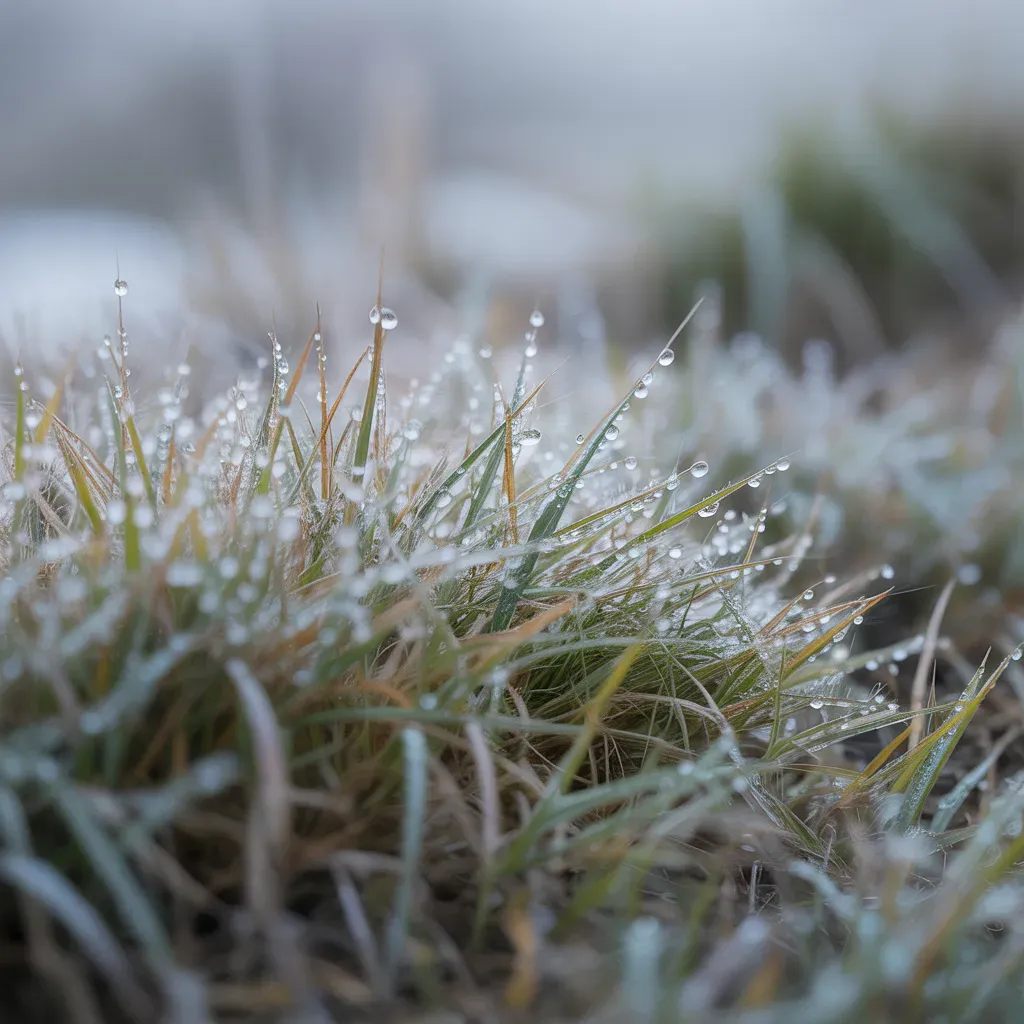Winter Mould Toxicity
Winter, and we've all seen it - adverse respiratory effects in our horses. What I'm seeing more and more of is clients contacting me because their horse hasn't just got a random cough or respiratory irritation - it's chronic, and has been ongoing for a long time, year in and year out.
So I've been studying again to get to the root of all this, and for starters there's no surprise - it all originates from mould, fungi and bacteria that thrive in damp environments, emitting spores, allergens, mycotoxins, endotoxins, and volatile microbial compounds into the air. And even worse for our horses, fungal fragments can stay airborne longer than fungal spores (which are larger) and so they can penetrate deeper into the lungs and deposit themselves there due to their small aerodynamic diameter. (Seo S, Choung JT, Chen BT, Lindsley WG, Kim KY. The level of submicron fungal fragments. Environ Res. 2014;131:71-76. doi:1016/j.envres.2014.02.015)
No surprise No. 2 - the longer the body's exposed to these toxins, the longer they weaken the immune system, making it more hypersensitive with an increased susceptibility to infection caused by opportunistic fungi, in other words, the body becomes immunosuppressed.
These moulds don't just affect the respiratory system though; we can see it topically as well, usually as some form of bacterial dermatitis issue. However, with the majority of peer-reviewed published research on mould being related to respiratory conditions, and the majority of my enquiries being the same, we'll start here.
Allergic Respiratory Diseases
Mould, which is a specific type of microscopic fungi, can thrive on just about anything – it can’t digest inorganic materials, i.e. concrete, glass, or metal, but it can digest and grow on the dirt, dust, and organic residue that accumulates on them. We’ve all seen it on stable walls, leather tack we've forgotten to clean, and in our hay - I've just recently had to chuck an entire 4-string bale where rain had got through a protective tarp - that mould was cooking! And very heavy to hump over to the muckheap ... 😒
Dampness and mould hypersensitivity syndrome (DMHS) typically presents with mild to moderate signs of irritation of the respiratory tract and/or the eyes, and if it progresses, it can become chronic, leading to allergic respiratory diseases and infections.
Worse, research also suggests that fungi can bind to antibodies, allowing them to be recognised by cells of the innate immune system - the body's first line of defense against germs entering the body - so seriously not good as this can then further aggravate allergic inflammation! (Conti P, Tettamanti L, Mastrangelo F, et al. Impact of fungi on immune responses. Clin Ther. 2018;40(6):885-888. doi:1016/j.clinthera.2018.04.010, & Kritas SK, Gallenga CE, D Ovidio C, et al. Impact of mould on mast cell-cytokine immune response. J Biol Regul Homeost Agents. 2018;32(4):763-768)
And then there’s the mast cell connection - mast cells are allergy cells responsible for immediate allergic reactions. They cause allergic symptoms by releasing products called mediators stored inside them or made by them. When triggered, these mast cells release substances that can cause signs and symptoms similar to those of an allergic reaction and, sometimes, severe inflammation that may result in organ damage. Common triggers that we see in us humans include alcohol, spicy foods, insect stings and certain medications.
Mould can activate the immune system directly or through fungal mycotoxins which can also trigger diseases mediated by mast cells, and aggravate allergic hypersensitivity inflammation, i.e. respiratory tract/eye irritation and recurrent chronic cough. Worse, mould can also liberate mycotoxins that may exist on volatile spores and stimulate mast cells to secrete pro-inflammatory cytokines and chemokines (cytokines - cell signalling proteins involved in modulating the immune system) (chemokenes - large families of cell signalling proteins that stimulate the migration of cells, most notably leukocytes, the body’s vital killer-army of white blood cells that protect the body from infection).
How it progresses ...
Studies and clinical research suggest that physiological dysfunction may even be associated with the toxins released in damp/water-damaged buildings, including chronic neurological and immunological diseases.
Cue our old friend, autoimmunity, and specifically related to the nervous system where it’s thought to be associated with exposure to fungal bioaerosols. The authors of a 2010 study investigated neurological antibodies and neurophysiological abnormalities in patients exposed to moulds who developed symptoms of peripheral neuropathy (numbness, tingling, tremors, and muscle weakness in the extremities). 83% of patients in the study presented with peripheral neuropathy. (Tuuminen T. The roles of autoimmunity and biotoxicosis in sick building syndrome as a “starting point” for irreversible dampness and mold hypersensitivity syndrome. Antibodies. 2020;9(2):26. doi:3390/antib9020026 & Campbell AW, Thrasher JD, Madison RA, Vojdani A, Gray MR, Johnson A. Neural autoantibodies and neurophysiologic abnormalities in patients exposed to molds in water-damaged buildings. Arch Environ Health. 2003;58(8):464-474. doi:3200/aeoh.58.8.464-474)
🤓Science alert!🤓 This same group of patients was also part of another study that demonstrated that mixed mould mycotoxicosis may be implicated in the production of antinuclear autoantibodies and antimyelin antibodies against the nervous system, and autoantibodies against smooth muscles. Collectively, this was referred to as ‘mixed mould mycotoxicosis' for the multisystem illnesses observed in these patients. (Gray MR, Thrasher JD, Crago R, et al. Mixed mold mycotoxicosis: immunological changes in humans following exposure in water-damaged buildings. Arch Environ Health. 2003;58(7):410-420. doi:1080/00039896.2003.11879142)
Support
Addressing the root cause is obviously about decreasing exposure, but thereafter the body’s ability to detoxify/biotransform and excrete toxic substances is of critical importance to minimise the risks.
These days we all know that toxins accumulate in the body and are the cause of numerous health problems - you all know how much I bang on about it all over this website - it's rare that client enquiries don't get a Carol-sermon on all-things-toxins (sorry!) 😏. But we now know how toxins affect the body, where they originate from, and how to improve the body's ability to detoxify in our toxic world.
For sure we need to alleviate the symptoms and focus on a healthy gut function to sustain a strong immune system, but supporting the liver and kidneys for their vital biotransformation and excretion role is an essential and critical part in protecting our horses’ health and well-being.
Spirulina can help enormously as an excellent natural gut-mycotoxin binder and hindgut deacidifier, especially useful if feeding haylage, fed alongside our LKLCARE liver:kidneys:lymphatics pathway regeneration programme.
It's also now thought that chronic, ongoing cough/respiratory dysfunction may be connected to the now widespread, multi-metabolic detoxification disorder known as Cryptopyrroluria, aka KPU. Have a read at our KPU page and see if any of it resonates with you.
Meanwhile, to end on a positive testimonial, and in support of spirulina, I had this email in just yesterday from an equine practitioner:
Hi Carol, just wanted to let you know that I think we may have found something that works for Archie's scabby feet! He's been prone to some form of dermatitis on his feet on and off since I had him. Sometimes it's worse than others and it usually responds to being gently cleaned off and then treated with a steriod cream I get from the vet.
However, since he's been on your Equivita with spirulina, the scabs have all gone. Must be a miracle ingredient because I've tried everything in the past and the only thing that has really helped was paddling in the sea!
Anyhow, thought you would like to know! Max

AFB1 – Aflatoxin B1 | AFM1 – Aflatoxin M1 | DON – Deoxynivalenol | FUM – Fumonisins | OTA – Ochratoxin A | T-2 – T-2 Toxin | HT-2 – HT-2 Toxin | ZEN - Zearalenone | Ergots – Ergot, AlkaloidsNew paragraph










